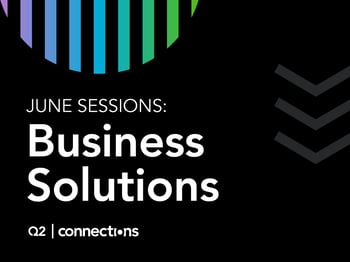By Tina Sen, Head of Marketing, Q2, EMEA
Buy now, pay later (BNPL) has surged in popularity over the last 24 months. A combination of improved digital technology and pandemic-related changes in consumer behaviour has seen the BNPL market garner nearly 15 million customers in the UK and 20% of Australia’s population. What used to be a product targeted largely at cash-poor Gen Z is fast becoming the preferred choice for consumers and vendors alike. But where is the market going? Which players will control the biggest share of consumers? And will regulation take the heat out of it all? These are some of the questions I was able to debate with peers at the recent AltFi Buy Now, Pay Later Forum. Read the blog to find out more or watch the video here.
Regulators revving up
“The appeal of BNPL for consumers is very clear,” says Anna Pifferi, Fintech Leader at Q2 EMEA. “It’s flexible, transparent, and the user experience is excellent - but regulators are going to enter the market to protect the consumer, especially because a lot of BNPL users are younger, and there is an element of financial naivety there.” Pifferi explains that providers are going to have to do their due diligence on consumer creditworthiness and the number of consumers they onboard.
“Regulators are going to wrap their arms around this in the short to medium term,” says Chetan Parekh, Financial Services Head at Mindtree, Europe. “The focus will be on making sure providers really know their borrowers.” Ultimately, he says, while BNPL poses a risk to some consumers, it also has a positive effect on financial inclusion. “It has the ability to reach the unbanked and under-banked,” he says, “and for small to medium-sized entities who often find it hard to secure cash, BNPL will offer a leg up in uncertain times. But controlling risk for all players will be important, and affordability, credit, and identity checks will tighten.”
Traditional lenders will enter the market
But despite the potential for regulation to slow the market, opportunities abound. “This is a fast-moving market,” says Pifferi, “and traditional lenders are looking to get in on it too - because BNPL is eating into their credit card revenue.” But traditional lenders have a hill to climb, she says, because fintechs and altfis have the advantage. “The BNPL offer by its nature requires digital fluidity,” she explains, “and fintechs started off with no legacy systems in place - so they have built agile technology with incredible user experience, flexibility, straight-through processing, and integrations that make accessing the product virtually frictionless.” Although regulation may help level the market, traditional lenders, she says, will still have to build a full, customer-centric ecosystem to expand into a new customer base and secure long-term growth. No small task.
Lessons learned and winners identified
So, with more regulation and new players trying to muscle in on the market, where does BNPL go next? “The greatest area of growth will be on the SME side,” says Pifferi. “It is a great offering for startups worried about cashflow, and with BNPL they can own their exposure to credit and experience virtually no delay to funding.” The winners, she says, will be those who are proactive to changes in the market. “The early lessons from the BNPL market suggest that this is all about being nimble,” she says. “Fintechs and altfis are by nature agile, so those who leverage technology to respond to change will win.”
“The winners will be those who reorganise their offering around customer behaviour and not products,” says Parekh. “The value proposition of BNPL is a personalised, frictionless experience, so finding ways to integrate into the daily lives of consumers will be a key part of any provider’s strategy.” Parekh also believes merchants will play an important role. “The BNPL offer will move from the checkout to the point of sale, so merchants will have to step up and guide the market by collaborating with providers and regulators to protect and educate customers, limit risk, and win consumers.”
Ultimately, Pifferi says BNPL is a step in the right direction - a financial product with more flexibility and transparency, and a better experience too. The winners will be those who can underwrite and fund quickly and seamlessly, while limiting their own exposure and protecting their customers. “Agility, agility, agility,” she says. “That’s what will count, wherever the market goes.”





